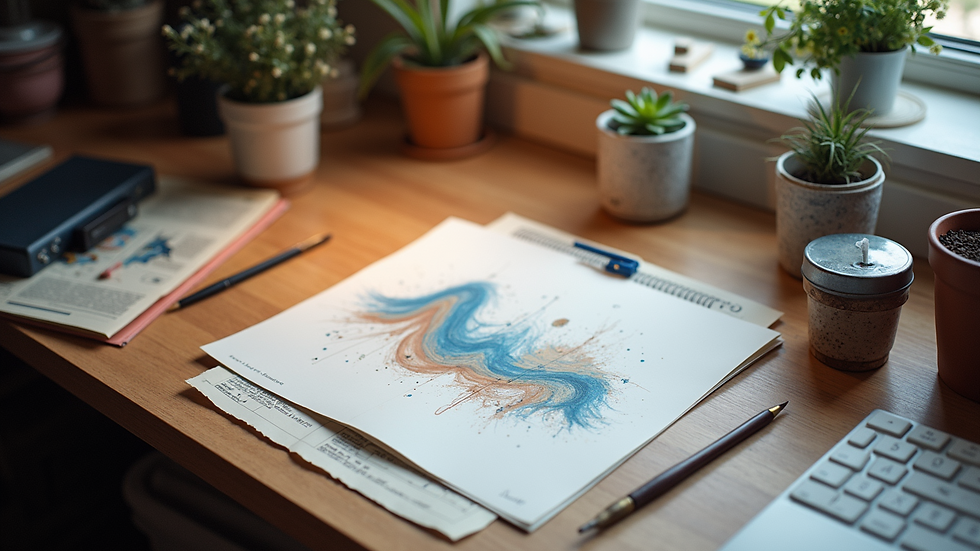Top 10 Critical Mistakes to Avoid When Designing Your Business Logo
- Daisy
- Aug 10
- 4 min read
Designing a logo is a pivotal step in shaping your business identity. A well-crafted logo does more than just look good; it tells your brand's story, attracts customers, and sets you apart from competitors. Unfortunately, many entrepreneurs make common mistakes that can compromise the effectiveness of their logos. In this post, we will highlight the top 10 mistakes to avoid when designing a logo for your business.
1. Ignoring Your Target Audience
One of the biggest pitfalls in logo design is neglecting to consider your target audience. Your logo should resonate with the people you aim to attract. If the design does not align with their preferences, it may fail to forge a connection.
Understanding your audience’s demographics, interests, and values is crucial. For instance, if you are targeting younger consumers, bright colors and modern fonts may be more appealing. Gather insights through surveys or focus groups. This knowledge will help you create a logo that truly speaks to your audience.

2. Overcomplicating the Design
Simplicity is key in logo design. A complicated logo is hard to recognize and remember. When creating your logo, strive for a clean design that effectively conveys your brand message.
Take inspiration from iconic logos like Apple and Nike. Their simplicity allows for instant recognition. For example, Apple’s logo is just a single apple silhouette with a bite taken out. Avoid cluttering your logo with excessive detail and focus on a few essential components that reflect your brand.
3. Choosing the Wrong Colors
Color selection is vital in logo design, as colors evoke emotions and communicate messages. Choosing the wrong colors can misrepresent your brand's identity.
Research color psychology before finalizing your choices. For example, blue often symbolizes trust, making it an ideal choice for finance-related brands. In fact, a study by the Institute for Color Research found that color can improve brand recognition by up to 80 percent. Select colors that resonate with your brand values and appeal to your target audience.

4. Using Generic Fonts
The font you choose can significantly influence your logo's overall effectiveness. Using generic or overly trendy fonts can make your logo appear unoriginal.
Instead, opt for a unique font that encapsulates your brand's personality. Consider utilizing custom typography to differentiate your logo and create a memorable impression. Make sure that the font is legible and functions well at various sizes. For instance, Coca-Cola's signature font is instantly recognizable, showcasing how a unique typeface can enhance brand identity.
5. Neglecting Scalability
Your logo will be utilized in numerous sizes and formats, from business cards to billboards. A common oversight is designing a logo that does not scale well.
Ensure that your logo remains clear and recognizable at all sizes. Test your design by scaling it down to the size of a social media icon or enlarging it to billboards. A scalable logo provides consistency across all platforms, enhancing brand recognition.
6. Failing to Seek Feedback
Designing a logo in isolation can result in unintended oversights. Failing to seek outside opinions can lead to a design that fails to resonate.
Share your logo concepts with colleagues, friends, or even potential customers. Gathering diverse opinions can uncover strengths and weaknesses in your design. Be open to constructive criticism. For example, a small business in retail revamped their logo after receiving feedback indicating their original design did not align with their target demographic's preferences.
7. Overlooking Versatility
Your logo will be used in various settings, from print materials to digital platforms. A common mistake is creating a logo that lacks versatility.
Design a logo that is effective in different formats, including black and white and on various backgrounds. For instance, how will it look on merchandise, websites, and social media? A versatile logo can adapt seamlessly, maintaining brand consistency across all platforms.

8. Relying on Trends
While keeping up with design trends is important, over-relying on them can lead to a logo that quickly becomes outdated. Trends come and go, while your logo should have a timeless appeal.
Focus on creating a logo that reflects your brand’s core mission. A classic design can stand the test of time, remaining relevant for years. For example, consider brands like Ford or Coca-Cola, which have maintained classic logos while keeping their designs fresh and aligned with their brand identity.
9. Ignoring Legal Considerations
Many entrepreneurs overlook the legal aspects of logo design. Not conducting a trademark search can lead to significant legal troubles down the road.
Before finalizing your logo, check that it does not infringe on existing trademarks. Carry out thorough research to confirm your design's uniqueness and ensure it can be legally protected. This precaution can save you from costly disputes or the need to rebrand.
10. Skipping Professional Help
While DIY logo design tools are widely available, attempting to create a logo without professional assistance can produce unsatisfactory results.
Hiring a skilled designer can significantly enhance your logo's quality. A professional understands design principles, color theory, and branding. Investing in a quality logo can lead to substantial returns, as it effectively represents your brand and attracts customers.
Final Thoughts
Designing a logo is a fundamental step in building your business identity. By avoiding these common mistakes, you can create a logo that communicates your brand values and resonates with your target audience.
Keep your design simple, focus on your audience, and seek professional help if necessary. A well-designed logo can lay the groundwork for your brand's success and leave a lasting impression.
Investing time and resources into your logo design will yield significant benefits over the years.



Comments